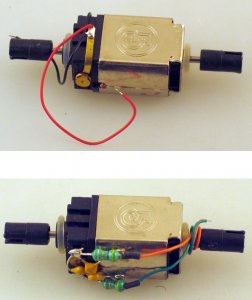KB02
Well-Known Member
One of my engines is a Backmann (not sure of the series) GP40. Great little engine that isn't picky about dirty track at all. It was basically my workhorse engine until I switched everything over to DCC. I put in the NCE BACH-DSL decoder in as it was just a drop in upgrade and the engine slowed down dramatically. With top voltage cranked up to 255, at speed step 28 it only moves at roughly a scale 50 mph. While this is fine for "Scale" operations, it just seems really out of place compared to me other engines.
Would anyone have any suggestions on how to speed up this loco?

Would anyone have any suggestions on how to speed up this loco?


